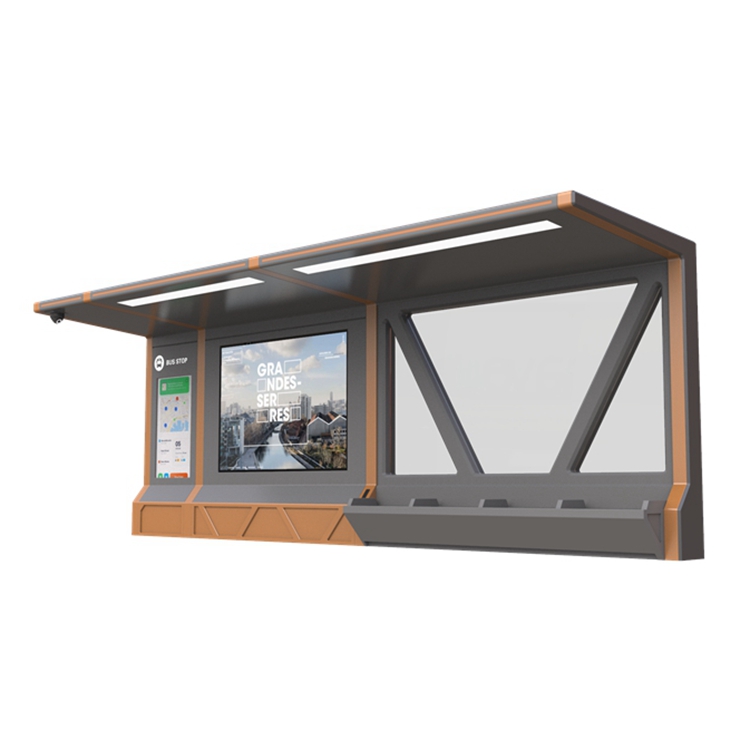Public transportation is an important component of the urban transportation system, which not only effectively alleviates urban congestion and pollution problems, but also improves urban operational efficiency and residents' travel convenience. However, traditional bus stop signs have problems with inaccurate, untimely, and incomplete information, which affects the efficiency and experience of passengers in obtaining bus information. To address these issues, we have introduced smart bus stops. Smart bus stops can display real-time information such as bus routes, schedules, arrival times, and operation status by installing electronic displays at bus stops, making it convenient for passengers to query and understand bus information. This innovative solution aims to improve the quality and efficiency of public transportation services, while also playing an important role in energy conservation, emission reduction, and environmental protection.
Smart bus stops have made the following contributions to energy conservation and emission reduction:
Optimizing public transportation operations: Through data interaction with backend systems, we can monitor and adjust the operational status of public vehicles in real-time, including departure intervals, speeds, and routes. In this way, we can avoid empty cars, traffic congestion, and detours, reduce fuel consumption and emissions of public vehicles, and thus save energy and resources.
Promoting public transportation: Smart bus stops provide accurate, timely, and comprehensive public transportation information, increasing passengers' confidence and satisfaction in public transportation, and promoting their willingness to choose public transportation. This helps to reduce the use of private cars, taxis, and other modes of transportation, thereby reducing congestion and pollution on urban roads and improving the air quality of the city.
Promotion of new energy: New display technologies and materials such as LCD have been adopted, and renewable energy has been utilized for power supply, reducing the energy consumption and cost of electronic station signs themselves. In this way, we have reduced our dependence and consumption on traditional energy, while also reducing the waste and pollutants generated by bus stops.

Through the above measures, smart bus stops not only have positive significance for energy conservation and emission reduction but also make important contributions to environmental protection:
1. Mitigating global warming and climate change: reducing emissions of harmful substances such as greenhouse gases will help alleviate environmental problems such as global warming and climate change, reduce urban temperature, and reduce the Carbon footprint.
2. Improving the urban environment and living environment: The promotion of smart bus stops can improve urban air quality and road smoothness, help improve the ecological and living environment of the city, and enhance the aesthetic and comfortable level of the city.
3. Enhancing public environmental awareness and behavior: Smart bus stops enable the public to better understand and pay attention to the environmental advantages and values of public transportation, enhancing their sense of environmental responsibility and participation. This helps to raise public awareness of environmental protection, guide them to take environmental protection actions, and further promote the sustainable development of cities.
Smart bus stops are a green and efficient transportation option that utilizes information technology and new energy technologies to improve bus service levels and user experience. It has made significant contributions to energy conservation, emission reduction, and environmental protection by optimizing bus operations, promoting bus travel, and promoting new energy. We firmly believe that smart bus stops are innovative models that conform to the concept of green development and Sustainable Development Goals, and are also smart models for urban transportation development and progress.








 Share to:
Share to: